
As the world deals with the COVID-19 pandemic, SHIC continues to focus efforts on prevention, preparedness, and response to novel and emerging swine disease for the benefit of US swine health. As a conduit of information and research, SHIC encourages sharing of its publications and research. Forward, reprint, and quote SHIC material freely. SHIC is funded by America’s pork producers to fulfill its mission to protect and enhance the health of the US swine herd. For more information, visit https://www.swinehealth.org or contact Dr. Sundberg at [email protected].

Significant attention is being paid to a study published in the Proceedings of the National Academy of Sciences last week. The study says a Eurasian avian-like H1N1 swine influenza virus with 2009 pandemic genes can facilitate human infection. Animal health experts from the U.S. Department of Agriculture (USDA), pork industry veterinarians and U.S. universities have reviewed the study published in the Proceedings of the National Academy of Sciences, and agree the study has scientific rigor. However, it does not contain important context essential for complete understanding of the present situation overseas nor the potential threat to the U.S. swine herd and consumers.
The following information helps broaden understanding of the H1N1 influenza virus in the study.

The National Pork Board (NPB) and Swine Health Information Center (SHIC) are funding a 12-month long project, with the collaboration of the National Pork Producers Council and the American Association of Swine Veterinarians, to identify gaps in US pork industry national biosecurity. The goal is to prevent entry of foreign animal disease (FAD) into the country by addressing the identified biosecurity gaps. The National Swine Disease Council (NSDC) represents all of these organizations collectively and provides oversight to the project. Following a competitive proposal process, the NSDC awarded EpiX Analytics of Fort Collins, Colorado, with the project.
As the industry has witnessed the recent spread of African swine fever (ASF) in Russia, Europe, and Asia as well as the distraction of the current COVID-19 pandemic, it served as a stark reminder of protecting the US pork industry from FADs. The economic repercussions of the introduction of FADs into the U.S are enormous, making it imperative to protect the industry.
“The National Pork Board supports the leadership provided by the National Swine Disease Council in making this decision to fund research designed to improve the industry’s biosecurity capabilities,” said Dave Pyburn, chief veterinarian with the Pork Checkoff. “The council, led by producers, is doing a great job in moving quickly to keep important work like this moving forward during this stressful time in the industry.”
In announcing the award of the funding, Dr. Paul Sundberg, SHIC executive director, stated, “This project will create a rigorous, science- and risk-based foundation for looking at the domestic pork industry. The information developed from this study will help producers to protect their industry and continue their worldwide competitiveness. We believe identification and prioritization of biosecurity gaps will not only protect the industry from ASF and other FADs, it may also improve efficiency of production by reducing the impact of endemic swine diseases.”
The project will not only identify and prioritize biosecurity gaps within the US pork industry, it will provide direction for corrective or additional measures of value. In the process, EpiX Analytics will point out potential mechanisms through which FADs can be introduced, spread, and affect the domestic pork industry, employing a unique approach including:
ASF will be used as a model for other FADs due to the virus’s resiliency as well as the great concern surrounding it in the industry. Among the many areas being considered for study are foreign imports, entry of foreign travelers, domestic transportation of animals, common inputs to U.S. production, domestic market channels and others. The outcomes will include details if biosecurity gaps are identified, including data sources and uncertainty in risk estimates.
This joint project reflects the commitment of SHIC, NPB, NPPC, AASV, and the National Swine Disease Council to serve and inform U.S. pork producers. Concern over the possibility of ASF reaching the U.S. drives this study which is anticipated deliver benefits for prevention, production, and security.
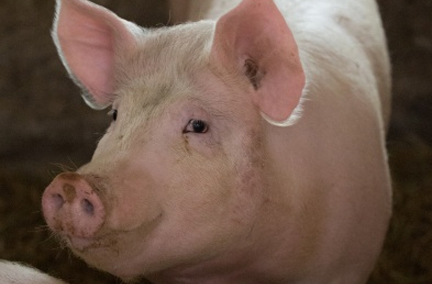
The Morrison Swine Health Monitoring Program MSHMP, partially funded by the Swine Health Information Center (SHIC), continues to expand its capacity and, as a result, delivers more and higher quality information on pathogen activity in US swine herds. Recent MSHMP capacity expansion improves and enlarges the program’s ability to collect and report pathogen data from an increasing number of volunteer cooperators. Their goal is having the capacity to manage data from as many producers as are willing to participate. Sow data is now being complemented with growing pig site information from participants. Presently, a total of 922 growing pig sites in seven states are included in MSHMP databases. These sites include the production flow of 68 sow farms (252,900 sows). More growth with additional growing pig site inclusion is anticipated soon.
The MSHMP database also grows with more data characteristics added. Staff has a plan to adapt to this growth and related demands, customizing the database and managing its increasing complexity. This includes the ability to add pathogens to the database when needed. Additionally, due to expansion efforts, the ability to assign a status based on a classification previously established by the program is now possible. MSHMP tested this ability by successfully adding Mycoplasma hyopneumoniae.
Further database expansion created the ability to keep a history of reported changes in breeding herds, such as when a farm was filtered or purchased by another production system. As a result, the program is able to maintain historical incidence data linked to the farm for future analysis. Pig flow management is another area where the MSHMP database was improved. The ability to link farms to connect sow and growing pig sites in the future has been tested with work ongoing to assign downstream flow status. The next step of expansion will be the inclusion of boar studs in the system, further connecting and tracking pathogen activity across sites, farms, and systems.
An additional layer of security was also added to the database. The present system allows few users to access the database, however, each time they do access and make changes, it is tracked. With the additional security, maintaining quality and control of MSHMP data is assured.
At its inception, MSHMP began to measure and monitor porcine reproductive and respiratory syndrome (PRRS) occurrence in the US, then later became a valued reporting system for porcine epidemic diarrhea virus (PEDv) activity, Senecavirus A (SVA) information, and central nervous system (CNS) cases. MSHMP relies on production companies and veterinarians who work collaboratively and voluntarily to report disease status data, as well as farm location and other pertinent data, to advance preparedness for endemic and emerging diseases weekly. These cooperators represent about 50 percent of the domestic sow herd and include integrated companies, managed production, veterinary practices, and regional control projects. This ongoing effort provides invaluable data and reports back to SHIC and the industry. With enhanced capacity to help the swine industry respond to emerging pathogens – a key factor in why SHIC helps to financially support the program – MSHMP delivers timely data used by practitioners and producers to ensure herd health. Aside from the weekly data MSHMP provides on surveillance, the program includes a report that serves to educate and inform the industry about the project findings.
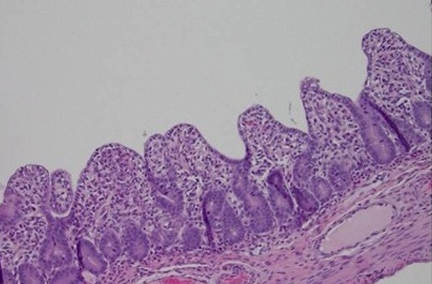
Building capacity for disease response means an outbreak has happened and a response is needed. How about stopping the outbreak from happening? One of the goals of the Morrison Swine Health Monitoring Program (MSHMP), partially funded by the Swine Health Information Center (SHIC), is to make real-time farm-level risk predictions for porcine epidemic diarrhea virus (PEDV) and porcine reproductive and respiratory virus (PRRSV). Making the predictions two weeks in advance allows production systems to take actions to prevent or mitigate the impact of a disease outbreak.
The forecasting process is intended to be achieved via a server-run machine learning model that will take into account the past weeks’ status of farms, animal movements, and environmental characteristics (temperature, humidity, season, land cover, among others). To create the machine learning model, MSHMP collected retrospective movement and farm status data (2014-2017) from systems representing approximately 30% of the US sow herd. Based on retrospective data, the model was able to correctly detect ~20% of PEDV outbreaks, and 70% of outbreaks predicted by the model did subsequently occur. PRRSV prediction has shown to be more challenging, possibly related to its intense genetic variation that might reflect in immune interactions not present in PEDV.
In December 2019, MSHMP began sending partnering systems weekly real-time PEDV predictions. Veterinarians receiving these reports are sent a ranked list of their sow farms according to which ones are most at risk of outbreaks, and this information is being used in decisions about whether or not to implement interventions and to emphasize biosecurity compliance on high-risk farms.
Data gathered from MSHMP have also been used to understand animal movements and their role in PRRS transmission in the US swine industry. MSHMP has been able to demonstrate that more PRRS spread is associated with farm contacts through animal movements as opposed to local area spread. Furthermore, the length of potential outgoing infection chains disseminated from some farms can be extremely large, upwards of 650 farms in extreme cases (which was approximately 25% of the farms in the network) in a period of six months. This is indicative of the presence of “super-spreader” farms within the network which may contribute to rapid disease spread via animal movements.
Overall, the risk of 1-7-4 (Lineage L1A) occurrence in a given farm increased not only as a result of direct contact via animal movements with an L1A-positive farm, but also increased as a result of indirect connections (contact of a contact) with L1A-positive farms. Moreover, farms that engaged in more outgoing movements also experienced higher risk. This suggests the risk due to animal movements is not only associated with movements of infected animals to the destination, but also from potential movement-related breaches in biosecurity on the origin farm and underscores the importance of transport-related biosecurity.
MSHMP also is cataloging and analyzing PRRSV genetic sequences shared by participants in order to better understand the drivers of regional circulation and spread of PRRSV. With this genetic data, MSHMP documented the ongoing diversification and temporal dynamics of different PRRSV lineages, including the emergence of specific sub-lineages that appeared to be absent globally pre-2008. MSHMP also identified evidence of positive selection on immunologically important regions of the genome, which supports the hypothesis that immune-mediated selection shapes the evolutionary and epidemiological dynamics for this virus. This work is published in a scientific journal (Frontiers in Microbiology, Impact Factor 4.076) and can be found here.

The Swine Health Information Center (SHIC) is pleased to announce an additional study on African swine fever (ASF) management and control taking place in Vietnam, made possible by a USDA-Foreign Agricultural Service grant received in 2019. Lessons from this study and others will be valuable if ASF enters the US. This project is validating protocols for targeted removal of individually housed sows when infected with ASF to move the herd to negative status, one of the many research proposals being funded by the USDA FAS grant received by SHIC, or with the cooperation of the National Pork Board in an effort to gain ASF information. The test-and-remove protocol is based on the premise that ASF, although highly infectious, has relatively slow transmission.
The targeted removal process involves immediate removal of any sow exhibiting clinical signs of ASF, submitting blood for ASF detection by PCR, and if the animal is determined positive, adjacent animals (two up and two down the trough from the sow) are also removed. This project will test sufficiency of this methodology for ASF elimination in the Vietnamese sow herd, while in the process testing four commercially available ASF point-of-care (POC) assays on diagnostic performance for detecting ASF in suspect and non-clinical neighboring animals. Researchers working on this study are from Boehringer Ingelheim, Iowa State University, and Nong Lam University.
As ASF rapidly spread across China, initial depopulation efforts included dramatic, intensive cleaning and disinfection with downtime requirements. Still, re-breaks after repopulation have been common. Many commercial farms in China have subsequently adopted the test-and-remove protocol. Vietnamese producers have followed China’s lead with use of the test-and-remove protocol, exploring its efficacy. Approximately 20% of sow farms affected by ASF in Vietnam have been unsuccessful in eliminating ASF through depopulation/repopulation, creating interest in the targeted removal protocol.
This study aims to assess, with additional diagnostic testing of non-clinical neighbor animals to those showing ASF clinical signs, the extent to which ASF virus has spread along a row of individually housed animals. The learnings from this testing regimen may lead to improvements in the success rate of test-and-remove, if failures have been due to insufficient culling around the positive animal. During the study, a target of 770 samples will be tested by laboratory standard PCR as well as the four POC PCR or lateral flow assays, creating a significant sample set to better assess field application and utility of POC testing in test-and-remove protocols for ASF control in Vietnam.
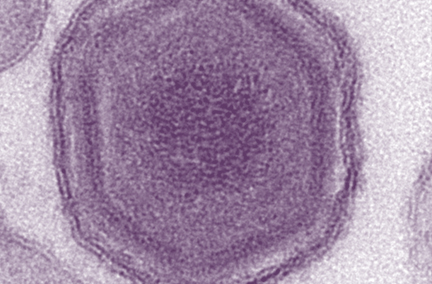
The Swine Health Information Center (SHIC) continues to share details on African swine fever (ASF) management and control research taking place in Vietnam, made possible by a USDA-Foreign Agricultural Service grant received in 2019. Lessons from this study and others will be valuable if ASF enters the US. In a project led by staff from South Dakota State University and the Vietnam National University of Agriculture, it will be determined if ASF virus can be detected in mice and rats, a potential threat of transmission.
If ASF virus can be detected in rodents in Vietnam, the study will then evaluate which tissues of mice and rats are best to sample. Next, the project will study the impact of farm biosecurity level on rodents’ ability to carry the disease, confirming whether stringent biosecurity reduces rodent movement as compared to farms with less stringent biosecurity and older buildings. Finally, researchers will measure mouse-to-mouse transmission of ASF in a controlled, laboratory situation, determining if ASF can be transmitted between mice through direct physical contact and/or contact with feces from ASF-infected mice.
This look into rodents as potential ASF vectors is one of the many research proposals being funded by the USDA FAS grant received by SHIC, or with the cooperation of the National Pork Board in an effort to gain ASF information.
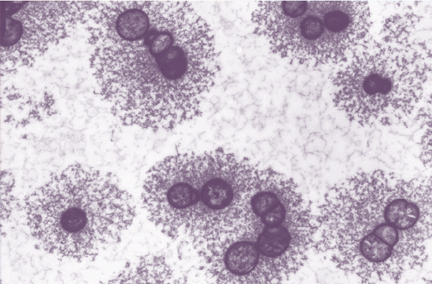
Prior to September and October 2019, no high mortality events due to Streptococcus equi subspecies zooepidemicus (S. zooepidemicus) in swine had been reported in the US. Then outbreaks in Ohio and Tennessee at that time saw mortality up to 50% due to S. zooepidemicus septicaemia in those cases. While no additional outbreaks have been diagnosed domestically since last fall, the Swine Health Information Center (SHIC) saw a need for more information on this high mortality disease. Consequently, SHIC funded a project conducted by researchers from Iowa State University and the National Veterinary Services Laboratory for a genomic epidemiological analysis on the limited occurrence. The study revealed eight isolates were clustered together with a strain causing outbreaks with high mortality elsewhere. This preparedness project equips the US swine industry with needed detail should another S. zooepidemicus outbreak occur and has implications for understanding, tracking, and possibly preventing related diseases as well.
S. zooepidemicus is most frequently isolated as an opportunistic pathogen of horses in the upper respiratory and lower genital tracts. It can also cause infections in a wide range of other animal species. The first high mortality event from S. zooepidemicus in North America was reported in Canada during March 2019. From late September to early October of 2019, three cases of cull sows and feeder pigs from Ohio and Tennessee were submitted to the Iowa State University Veterinary Diagnostic Lab (ISU VDL). High mortality ranging from 10% to 50% in groups of pigs was reported over the period of 8 to 10 days at the buying station in Ohio and similar high mortality (922 out of 2,222 sows in lairage) from an abattoir in Tennessee. The clinical signs included sudden death, weakness, lethargy, and high fever. Splenomegaly and haemorrhagic lymph nodes were the most consistent macroscopic findings. Microscopic lesions were consistent with acute bacterial septicaemia. A laboratory diagnosis of S. zooepidemicus septicaemia was given, which was corroborated by histopathology, PCR, and bacterial culture.
To genetically characterize S. zooepidemicus strains associated with high mortality and gain insights into the epidemiology of these highly unusual and unexpected outbreaks, researchers performed whole-genome sequencing on eight isolates from the Ohio and Tennessee outbreaks, another outbreak-unrelated swine isolate from Arizona, and 15 S. zooepidemicus isolates from other animal species. Three full-length complete genome sequences were further assembled, and genomic epidemiological and comparative genomic analyses were conducted.
Findings from this project provide significant and timely insights for a better understanding of the epidemiology and virulence of S. zooepidemicus isolates associated with highly unexpected and severe outbreaks that occurred very recently in the US swine population. In addition, identification of specific virulence genes and genomic islands may lead to the development of novel molecular diagnostic tools, and provide the basis for future investigation of virulence mechanisms and control measures.
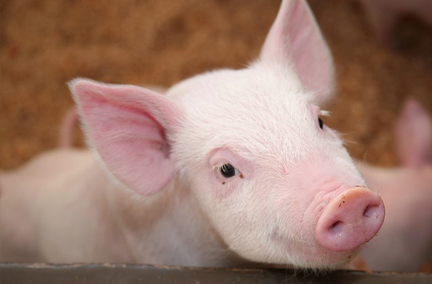
The Swine Health Information Center (SHIC) funds the Domestic Swine Disease Monitoring Report (DSDMR), a collaborative project among multiple veterinary diagnostic labs (VDLs), to aggregate swine diagnostic data. Prepared by Drs. Daniel Linhares and Giovani Trevisan at Iowa State University, the DSDMR describes dynamics of pathogen detection by VDL-performed assays over time, specimen, age group, and geographical area. Data included is from the Iowa State University VDL, South Dakota State University ADRDL, University of Minnesota VDL, and Kansas State University VDL. Beginning in June 2020, there is a new element included in the DSDMR – specific state-by-state pathogen trends. With this report, veterinarians and producers will know if porcine epidemic diarrhea virus (PEDV), porcine reproductive and respiratory syndrome virus (PRRSV), Mycoplasma hyopneumoniae (MHP), or potentially other pathogens are moving up or down in states being analyzed. Identifying these trends is just the first step to further analysis of the data to understand the reasons for the trends and, thus, to help manage them.
This project includes states where DSDMR participant VDLs are located and those having a swine inventory equal to or greater than 2 million pigs. Authors are using the percentage of PCR-positive submissions by state then applying smoothing models to forecast results for a 12-month period. This report uses predicted values of percentage-positive results by PCR (by pathogen, month, and state) which were then subtracted from observed values, generating residue values. Then, residues were scanned by an exponential weighted moving average (EWMA) model to monitor and generate the changes from the expected baseline. The baseline and monitoring are constructed based on each state’s data with no comparison across states.
EWMA findings are reported as changes in standard deviations (STD) from the expected baseline. Changes from baseline are reported as:
Information for each state regarding the change from baseline, the number of total, positive submissions, and percent of positive results were recovered from the models and transferred to Microsoft Power BI for geographic visualization. The dashboards for state-by-state pathogen trending can be accessed on the SHIC website at Domestic Swine Disease Monitoring Report or by visiting Iowa State University’s site for the Swine Disease Reporting System (SDRS).
As the world deals with the COVID-19 pandemic, SHIC continues to focus efforts on prevention, preparedness, and response to novel
and emerging swine disease for the benefit of US swine health.

In the July Domestic Swine Disease Monitoring Report, we learn porcine reproductive and respiratory (PRRS) virus cases dropped in June compared to May. Overall detection of PRRSV-positive cases was in the upper boundaries of the forecasted levels for the first three weeks of June. The overall percentage of porcine epidemic diarrhea virus (PEDV) RNA-positive cases in June also decreased compared to May and were within expected boundaries of forecasted levels for this time of year. Porcine delta coronoavirus (PDCoV) cases were just slightly lower in June compared to May and there was one positive case of TGEV RNA in June 2020. Mycoplasma hyopneumoniae-positive cases in June were within the forecasted levels for this time of year. Further details are included in the full report.

In California last month, 19,555 pounds of smuggled food products from China were found by US Customs and Border Patrol. Nigeria reports the largest outbreak of ASF in the last 12 years. Information on avian-like H1N1 swine influenza virus in China is included in this report along with information on the OIE-FAO Network of expertise on animal influenza which released a communication regarding Influenza G4.
Copyright 2024 | Swinehealth.org | Website by Heartland Marketing Group